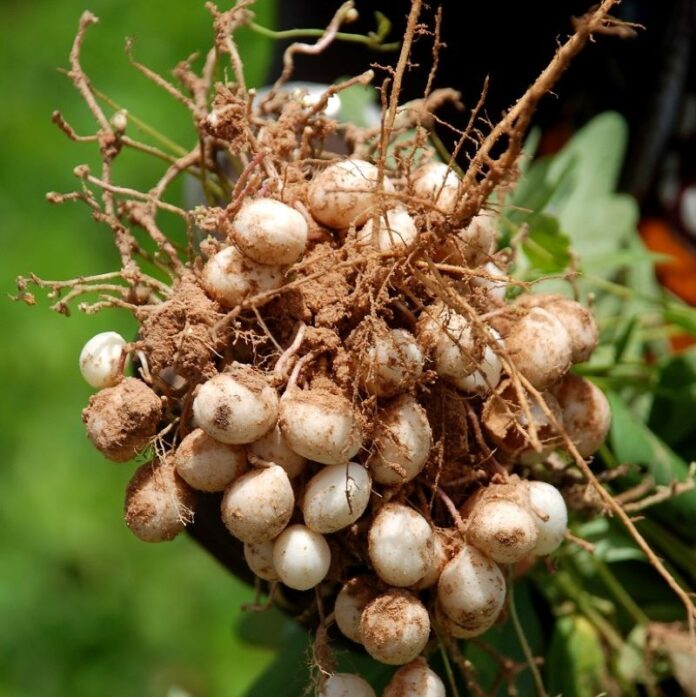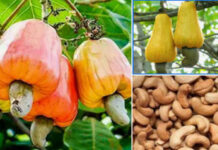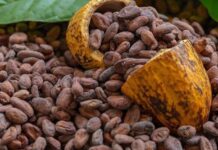Through climate niche modeling, new research has identified how forgotten food crops can diversify or replace major staple crops in sub-Saharan Africa by 2070 and benefit micronutrient supply. The study identified 58 crops, including “better-adapted and more nutritious” vegetables, fruits, cereals, pulses, seeds, nuts, roots and tubers.
Around 10% of the production locations of major staples in sub-Saharan Africa – corn, rice, yams and cassava – may experience novel climate conditions in 50 years, meaning that they will no longer be suitable climates for these staple crops.
“I wholeheartedly concur with the study’s conclusion that Africa’s ‘forgotten’ food crops offer opportunities both for more climate-resilient agriculture and healthier food systems and that their promotion has received limited attention,” Gus Le Breton, African plant hunter at Baobab Exports, tells FoodIngredientsFirst.
“There are complex reasons that forgotten food crops have received such limited attention. The good news is that these can – and indeed must – be overcome. I believe we are on the brink of a new golden age of research into traditional and underutilized food crops worldwide and I’m convinced that Africa will be at the forefront.”
Forgotten food crop potential
Lead author Dr. Maarten van Zonneveld of the World Vegetable Center in Taiwan, explains that many of the 58 forgotten crops in the study are annuals and tree fruits that are rich in vitamin A and C and many are vegetables high in vitamin A, iron, folate and zinc.
“Our study shows that in most locations where maize, rice, yams and cassava are grown in sub-Saharan Africa, one or more forgotten food crops from the different food groups will be suitable for cultivation under 2070 climate conditions and diversify production zones of major staples to support more nutrient-rich diets,” he explains.
Le Breton highlights several examples of forgotten foods of Africa, such as the baobab fruit, “a superfruit that is both tasty and highly nutritious and is now making waves in the international market.”
The study also looked at the bambara nut, a pulse “with a fabulous flavor” listed as one of the Knorr and WWF Future 50 Foods. Next up, fonio is “possibly Africa’s oldest cultivated grain” with a nutty flavor and an excellent nutrient profile, while teff grass seed from Ethiopia is often seen as the “next super grain.”
“Our biggest success has been with the Baobab fruit, which is now relatively well-known and widely consumed, but we are seeing increased traction with many other species. I’m confident there will be an upsurge in demand for novel African food plants within and beyond Africa,” adds Le Breton.
He adds that the currently limited array of food crops available to consumers has resulted in a “catastrophically unbalanced diet, leading to a spiraling growth of metabolic diseases in Africa.”
Novel climate conditions
Locations with still-suitable climates would decline strongest in West Africa (17.7%) and Central Africa (14.5%).
Though staples must be adapted to the new conditions through breeding, diversification of cropping systems and their replacement with other crops can help promote greater resilience.
“Most of the current food crops are grown in a monocultural system, which is highly vulnerable to pests and drought, explains Le Breton. “This creates a huge vulnerability that one adverse event can cause a total crop failure.”
“These monocultures depend on the use of environmentally unsustainable agrochemicals and – often equally unsustainable – mining underground water resources through irrigation.”
The Global Alliance for Improved Nutrition (GAIN) recently warned that COVID-19, climate change and conflicts wiped out the progress made in malnutrition “over the last 15 years.”
Challenges to overcome
The study, published in Proceedings of the National Academy of Sciences of the United States of America (PNAS), notes that lack of access to appropriate planting material significantly hinders diversifying food production, as is a lack of markets for the foods produced. Le Breton adds that there is a need to “overcome consumer resistance within Africa toward food crops perceived as being old fashioned and outdated.”
He further notes that government agricultural extension services need to be reformed as these have been built around the currently limited array of food crops. Multinational agrochemical and seed companies must be convinced that increased production of forgotten food plants presents opportunities rather than threats.
Moreover, he stresses that “restrictive regulatory environments (e.g., EU Novel Foods) inhibit the uptake of novel African foods in major export markets.” African leaders recently called for “more commitment and accountability in Africa’s efforts to achieve continental and global goals for nutrition, ahead of the 2025 World Health Assembly Nutrition target deadline.”
Putting plans into action
To successfully mainstream these forgotten foods, it is crucial to work closely with local producers and consumers along the value chain, explains study co-author Dr. Stepha McMullin of the Center for International Forestry Research and World Agroforestry research institute (CIFOR-ICRAF) in Kenya.
“We work with rural communities in East and Southern Africa to design and implement locally-tailored food tree portfolios distributing seedlings through community nurseries, alongside dietary education in schools, combined with the influence of school pupils on their parents, that guides their consumption.”
“We work with farmers in Benin, Mali and Tanzania to test varieties of okra, amaranth, jute mallow and spider plant,” explains the study’s co-author Dr. Sognigbé N’Danikou, a specialist in traditional vegetables at the World Vegetable Center.
“Farmers are enthusiastic about the trials and we see high rates of adoption of these crops in farmers’ fields and an increasing interest from local seed enterprises to scale seed supply of these crops.








